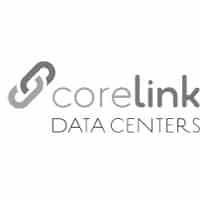
The tech industry loves to uses catchy phrases to describe various processes, innovations and aspects in data centers. Every now and then, we think it is important to narrow in on those phrases and explore what they mean and how they impact data center operations. One of those phrases is “data in motion vs. data at rest.” Data in motion vs. data at rest are somewhat self-explanatory but their nuances and impact on data centers are not. Data in motion is data that is actively being used by data centers, it is data in transit. Data at rest is data that is not being actively used but is stored in a data center. These two different types of data present unique security challenges. For example, data in motion may be in transit on the internet and that presents different security challenges than data at rest that, while not actively in use, may contain sensitive customer information.
When it comes to securing data of any kind there are a variety of ways to prevent security breaches and cyber-attacks. Encryption is certainly a must and data at rest must be secured on a number of levels because it may be stored in multiple places, including databases, storage networks, file servers, or virtually in the cloud. Data in motion is exposed to cyber-attacks at a number of points while in transit. DataMotion explains what risks may be encountered and describes some best practices when it comes to securing data, “Data is at rest when it is stored on a hard drive. In this relatively secure state, information is primarily protected by conventional perimeter-based defenses such as firewalls and anti-virus programs. However, these barriers are not impenetrable. Organizations need additional layers of defense to protect sensitive data from intruders in the event that the network is compromised. Encrypting hard drives is one of the best ways to ensure the security of data at rest. Other steps can also help, such as storing individual data elements in separate locations to decrease the likelihood of attackers gaining enough information to commit fraud or other crimes…Data is at its most vulnerable when it is in motion, and protecting information in this state requires specialized capabilities. Our expectation of immediacy dictates that a growing volume of sensitive data be transmitted digitally— forcing many organizations to replace couriers, faxes, and conventional mail service with faster options such as email. Looking ahead, it will also become increasingly important for the encryption service your organization uses to cover mobile email applications. The Radicati Group1 predicts that 80% of email users will access their accounts via mobile devices by 2018, but more than 35% of organizations currently using email encryption say their users currently lack the ability to send secure messages from their mobile email client.” Securing data will be a challenge that will never leave, data centers must look forward, anticipate potential future threats, and use multi-level encryption to ensure that data in motion and data at rest remain protected.




























